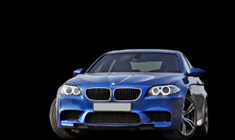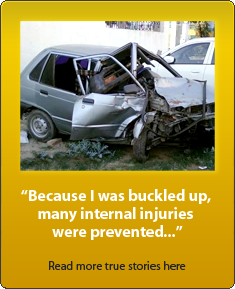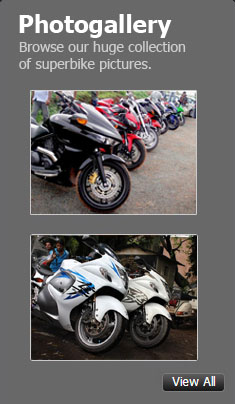News
How does 2WD, 4WD and AWD work? Explained with a variety of examples
28th January 2025, 15:30 by R Patil
The Hyundai Creta is a FWD SUV, the Maruti Suzuki Grand Vitara gets optional AWD and the Mahindra Scorpio is a 4WD SUV; Here's a beginner's guide to how these drivetrains work
BHPian blogslogger recently shared this with other enthusiasts:
How is a vehicle driven?
- Engine: It all begins with the engine/electric motor, which generates power.
- Transmission: This power is then sent to the transmission, which adjusts it to the right level depending on the vehicle’s speed and load. Also known as the gearbox.
- Driveshaft: In rear-wheel drive (RWD) and four-wheel drive (4WD) vehicles, the transmission sends the power through the driveshaft. In front-wheel drive (FWD) vehicles, the power goes straight to the wheels. It is generally a rotating piece of metal.
- Differential: The differential splits the power between the wheels, allowing them to turn at different speeds for smoother turns.
- Axles: Finally, the power reaches the axles, which rotate the wheels and get the car moving.

Glossary ofDrivetrain Terms:
- Drivetrain: This is the system that connects the engine to the wheels, making the car move.
- Differential: A gearbox that allows the wheels to turn at different speeds, especially useful when you're turning.
- Driven Wheels: The wheels that receive power to move the vehicle.
- Transfer Case: A component that transfers power from the transmission to the front and rear axles. Basically a second gearbox.
- Central Differential: A differential that splits power between the front and rear axles.
- Front Differential: A differential that splits power between the front wheels.
- Rear Differential: A differential that splits power between the rear wheels.
- Locked Differentials: Ensures both wheels on an axle turn at the same speed.
- Mechanical Locking Differentials: It works by locking the axles together, which helps the vehicle maintain traction and keep moving forward when it's stuck.
- Brake Locking Differential: It uses the vehicle's brakes to electronically control wheel spin by applying braking force to the wheel with less traction, effectively transferring power to the wheel with more grip, thus improving traction on slippery or uneven terrains; essentially acting like a locking differential without physically locking the axle.
- Torque Vectoring: A system that distributes power to individual wheels to improve handling and stability.
- Grip: The traction your car's tires have on the surface.
Types of Drives
1. Front-Wheel Drive (FWD):- How it works: The engine powers the front wheels.
- Why it’s good: FWD is great for fuel efficiency and provides solid traction, especially in slippery conditions like rain or snow.
- Examples: Maruti Suzuki Alto, Hyundai i20, Kia Seltos, Innova Hycross, Audi A4- about 90% of the cars in India
- How it works: The engine powers the rear wheels.
- Why it’s good: RWD offers better handling and balance, making it ideal for performance driving.
- Examples: Mahindra Scorpio, Innova Crysta, BMW 3 Series, Mercedes-Benz C-Class.
- How it works: AWD systems automatically send power to all four wheels, either all the time or when needed. They are in cars popularly referred to as ‘Softroaders’
- Why it’s good: AWD is perfect for everyday driving, especially if you live in an area with unpredictable weather. It gives you extra confidence when driving on wet, icy, or snowy roads.
- Examples: Audi Q3, Volkswagen Tiguan, Suzuki Grand Vitara (AllGrip)
- How it works: 4WD systems are made for off-road adventures. You can switch between 2WD and 4WD modes, and they often have high and low gear ranges for different terrains.
- Why it’s good: 4WD gives you maximum traction and control in tough conditions like mud, snow, or rocky trails.
- Examples: Mahindra Thar, Toyota Hilux, Isuzu D-Max V-Cross, MG Gloster, Suzuki Jimny
How Each Drive Type Works
1. Front-Wheel Drive (FWD):
2. Rear-Wheel Drive (RWD):- Power Distribution: The engine sends power to the front wheels through the transmission and differential.
- Components: FWD uses a transaxle, which combines the transmission and differential in one unit.
- Best for: City driving and light off-road conditions. It is ideal for slippery roads. We’ve all seen ‘Lord’ Alto clips in Leh.
- Advantages: FWD is fuel efficient, has less moving parts, frees up room in the cabin and is generally cheaper to manufacture.
- Disadvantages: Has a physical limit of how much horsepower can be transferred to the road. Also causes understeer and generally not fun to drive.
- Power Distribution: The engine sends power to the rear wheels via a driveshaft connected to the rear differential.
- Components: RWD has a separate transmission and differential, linked by a driveshaft.
- Best for: Performance driving and heavy-duty tasks like towing. It is also preferred for drifting and for ‘fun’ (in controlled conditions).
- Advantages: RWD gives you better balance and handling. I some cars, gearbox is placed at the back of the car for better weight distribution. Since the front wheels only do the steering, rear wheels can be of different size to optimize handling and performance.
- Disadvantages: Lots of additional parts to go wrong, an extra service item to check and causes oversteer.
- Power Distribution: Power is sent to all four wheels, either all the time or when needed, using a central differential or electronic control system.
- Components: AWD includes a central differential or an electronic control unit, plus front and rear differentials.
- Best for: Varying road conditions and light off-road use.
- Advantages: : It provides extra traction and stability, helps to not get stuck in places. It is a middle ground between 2WD and 4WD.
- Disadvantages: Useful only for a few situations. Extra hardware and electronics to fail. Less fuel efficient compared to 2WD.
- Power Distribution: You can manually switch between 2WD and 4WD modes. In 4WD mode, power goes to both the front and rear wheels.
- Components: 4WD includes a transfer case for switching between high and low gear ranges, plus front and rear differentials.
- Best for: Off-roading and extreme driving conditions.
- Advantages: 4WD gives you the best traction and control for off-roading or driving in rough, rocky conditions. Also, can propel itself forward with only one wheel having grip.
- Disadvantages: Less fuel efficient, lots of hardware majority of the people do not use in their lifetime and extra costs.
2WD and AWD drivetrains are not configurable. They do have a few traction control modes like Mud, Snow, Sand etc. There are all electronic aids and adjust the traction control. Generally, no user input required. 4WD vehicles offer lots of user control.
Understanding 2H, 4H, and 4L Modes
2H (Two-Wheel Drive High):
- How it works: In 2H, the vehicle runs in two-wheel drive, meaning power goes to rear wheels, depending on the vehicle.
- When to use it: This is the mode you want for regular driving on paved roads. It’s the most fuel-efficient option and perfect for everyday conditions.
- How it works: In 4H, power goes to all four wheels, but at a higher gear ratio. This helps when you need extra grip at higher speeds, like on loose or slippery surfaces.
- When to use it: Use 4H when driving on gravel, snow, or moderate off-road trails. But don’t use it on dry, paved roads, as it can damage the drivetrain by causing it to bind.
- How it works: In 4L, the vehicle uses a low gear ratio to provide maximum power at low speeds. This is ideal for tough, slow-speed conditions where you need full control.
- When to use it: 4L is perfect for rock crawling, deep sand, steep hills, or heavy towing. Avoid using it on high-speed roads or paved surfaces—it’s meant for low-speed, high-torque situations.
When to Use These Modes on Different Surfaces
Paved Roads (Sealed Surfaces):
Example: Toyota Fortuner
How to Activate:

- 2H: This is your go-to mode for regular driving on paved roads.
- 4H: Not recommended for paved roads, as it can cause damage to the vehicle due to the lack of wheel slip.
- 4L: Not suited for paved roads at all—this mode is built for slow, controlled movement in challenging off-road situations.
- 2H: Avoid using 2H off-road—it doesn’t provide enough traction for rough terrain.
- 4H: Perfect for loose gravel, mud, snow, or sand, where you need extra grip at moderate speeds.
- 4L: Ideal for extreme off-roading like rock crawling, deep mud, or steep hills where you need maximum power and control.
Activating 4WD in Different Vehicles
1. Rotary DialExample: Toyota Fortuner
How to Activate:
- Locate the Dial: Find the rotary dial on the dashboard, usually labeled with 2H, 4H, and 4L.
- Switch to 4H: Turn the dial to 4H for four-wheel drive high. This is great for slippery conditions like snow or gravel.
- Switch to 4L: To engage four-wheel drive low, turn the dial to 4L. This mode provides maximum torque for tough off-road conditions like deep mud or steep hills.

2. Gear Lever
Example: Mahindra Thar
How to Activate:
- Locate the Lever: Find the 4WD gear lever, usually next to the main gear shift.
- Shift to 4H: Move the lever to the 4H position for four-wheel drive high. This is useful for moderate off-road conditions.
- Shift to 4L: To engage four-wheel drive low, put the vehicle in neutral, then move the lever to the 4L position. This mode is ideal for extreme off-road situations.

3. On-Screen Controls
Example: Range Rover
How to Activate:
- Access the Screen: Use the vehicle’s infotainment system or a dedicated 4WD control screen.
- Select 4H: Navigate through the menu to select 4H for four-wheel drive high. This mode is suitable for slippery or loose surfaces.
- Select 4L: To engage four-wheel drive low, select 4L from the menu. This provides maximum torque for challenging terrains.
- As always, car systems can only do so much. Always go offraoding in groups, have a tow rope and tow bar handy and know the limits of yourself and the car.
Check out BHPian comments for more insights and information.











.jpg)







